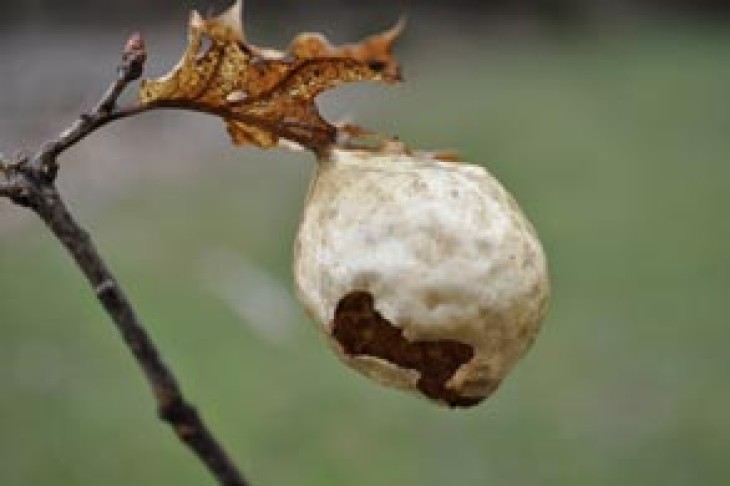No hints on this one. What in the woods is it?
Answer
An oak gall wasp.
There are a variety of gall-forming wasps in the northern forest, and several species that target oak trees specifically. Gall-forming wasps usually overwinter as adults away from their host trees. In spring, as the buds begin to break, a female wasp will seek out an oak tree and lay her eggs in the expanding plant tissue. When an egg hatches, the wasp larva secretes growth-regulating chemicals that, when combined with the oak tree’s own plant chemicals, produce a gall. After a brief period of cell growth, gall development stops. The insect remains in its “house,” and feeds on gall tissue until it’s mature.
Thanks to photographer Andy Crosier for sharing this wonderful photo.
We’re also still receiving theories on the McIntyre sawmill picture we ran a few weeks back, and we’d like to share one interesting one that was submitted by Windsor County (Vermont) forester Jon Bouton:
“Perhaps McIntyre invented this saw to provide wooden buttons to the Johnson Wool Mill for Paul Bunyan’s work clothes. The trees back then were much larger than we usually see today, and the sawyer would cut off some wide 8/4 and 12/4 planks. Then they used this button saw to cut buttons out of those planks. The 2-inch thick buttons were for Paul’s longjohns, and the more rugged 3-inch buttons were for his coats and pants.”
We left messages at the Johnson Wool Mill to see if they could shed any light on this for us, but the calls were not returned by press time.
This week’s contest winner was Paul Griner of West Lafayette, IN


